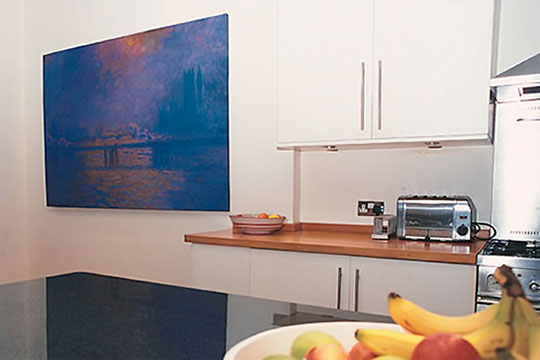Down the hall, your 10-year-old practices saxophone. In the garage, your husband fires up his table saw. The racket has the artwork on the walls jiggling.
Wouldn’t it be great if you could muffle all that noise? By soundproofing your walls, you’ll gain peace and quiet, and restore a little sanity to your household.
To quiet household noise, you’ll need to reduce vibrations, plug sound leaks, and absorb sounds.
Secret #1: Extra Drywall.
Sounds are vibrations. Deadening those vibrations is best done with heavy, dense materials that stop noise in its tracks.
When it comes to heavy, brick and stone are great but impractical for retrofitting your interior walls. The easiest strategy is to add a second layer of drywall to build up a thick, sound-deadening barrier.
You don’t have to add drywall everywhere — you can isolate the noisy room (kid’s saxophone) or the quiet room (your reading nook).
You’ll have to refinish and repaint your new drywall, and probably extend electrical outlets and switch boxes, but those are relatively easy and inexpensive DIY projects.
Secret #2: The Caulk Sandwich.
As an extra defense, separate the two layers of drywall with 3/8-inch-thick beads of acoustical caulk ($9-$20 for 28-oz. tube). The caulk deadens vibrations that try to travel from one layer of drywall to the other.
Secret #3: Mass-Loaded Vinyl.
Made especially for noise control, mass-loaded vinyl (MLV) is a flexible material that comes in 4-foot-wide rolls. It’s made to hang on walls or install on floors to help deaden sounds. Sandwich it between layers of drywall to greatly reduce sound transmission through walls.
A 15-foot-long roll of 1/8-inch-thick MLV (60 sq. ft.) is $80-$110. It’s heavy, so if you buy it online, expect to pay another $40-$50 for shipping.
Secret #4: Plugging Sound Leaks.
“Sound is like water,” says Josh Kernan of Westside Drywall in Hubbard, Ore., noting that anywhere water can leak through — cracks and openings — sound can get through, too.
To stop leaking sound, use acoustical caulk to plug holes and gaps around:
- ceiling fixtures
- switch boxes
- receptacle boxes
- door casing
Add sweeps ($6–$14) to the bottoms of doors and weatherstripping to door frames.
Secret #5: Absorbing Sound with Acoustic Panels.
Acoustic panels absorb sounds before they can bounce off walls and ceilings. They’re made to improve the sound inside a room, such as a home theater, but they’re also helpful in reducing sound transmission through walls.
Made of porous expanded polypropylene (PEPP), panels come in a variety of sizes and thicknesses. Most types for home use are covered in fabrics with dozens of colors to choose from. Some manufacturers offer custom-printed fabrics that turn your sound blocking panel into a piece of wall art: Send in a digital photo, and they’ll reproduce it on your panel.
Panels attach with clips or Velcro, and installation is an easy DIY job. A standard 2-by-2-foot panel is $25-$30.
Secret #6: Quieting Ambient Noise.
Adding soft items to rooms — rugs, carpets, drapes, potted plants — helps reduce vibrations and ambient noise.
Related: Are Soundproof Windows Worth the Money?
Secret #7: Silencing Ducts.
Sound-deadening duct wrap quiets noisy ducts and adds thermal insulation. A 4-by-30-foot roll of 1-inch-thick wrap is $50.
Secret #8: Adding Solid-Core Doors.
A solid core interior door ($60–$80) absorbs sound better than a hollow-core door. Add a sweep to cut airborne sound.
Secret #9: Knowing Your STC Ratings.
Soundproofing products often come with a Sound Transmission Class (STC) rating. STC is a measure of how many decibels of sound reduction a product provides. The higher the STC rating, the better.
An improvement of 10 STC makes the noise seem like it’s been cut in half. On the other hand, a rating difference of 3 STC or less is nearly imperceptible — worth knowing when comparing products.
Related: Soundproofing Ceilings
